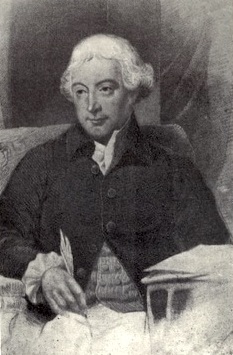
Charles Lawrence (British Army officer)
Brigadier-General Charles Lawrence (14 December 1709 – 19 October 1760) was a British military officer who, as lieutenant governor and subsequently governor of Nova Scotia, is perhaps best known for overseeing the Expulsion of the Acadians and settling the New England Planters in Nova Scotia. He was born in Plymouth, England, and died in Halifax, Nova Scotia. According to historian Elizabeth Griffiths, Lawrence was seen as a "competent", "efficient" officer with a "service record that had earned him fairly rapid promotion, a person of considerable administrative talent who was trusted by both Cornwallis and Hopson."[1] He is buried in the crypt of St. Paul's Church (Halifax).
Charles Lawrence
14 December 1709
Plymouth
19 October 1760 (aged 50)
Halifax, Nova Scotia
British
Governor of Nova Scotia
Early career[edit]
Lawrence was born in Plymouth (Devon) on 14 December 1709. He followed his father, General Charles John Lawrence, who is said to have served in Flanders under John Churchill, 1st Duke of Marlborough, into a military career.
Charles Lawrence's earlier life is obscure. He was commissioned in the 11th Regiment of Foot and served in the West Indies from 1733 until 1737. He then served in the War Office. He was made lieutenant in 1731 and then captain in 1745. He was wounded while serving with the 54th Foot in the Battle of Fontenoy in 1745.[2]
Endnotes
Texts